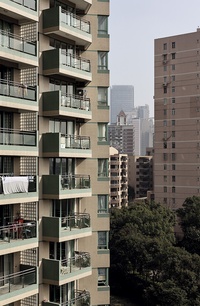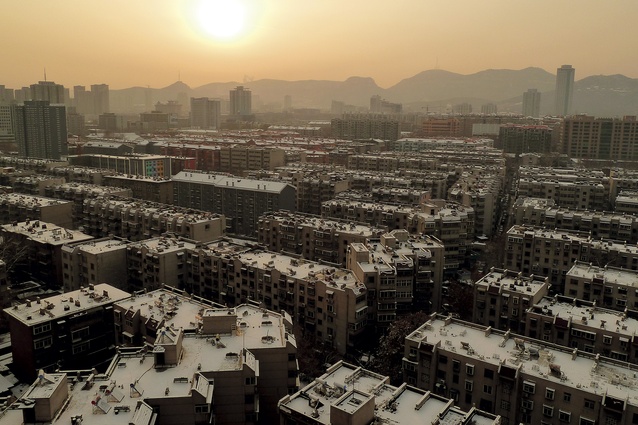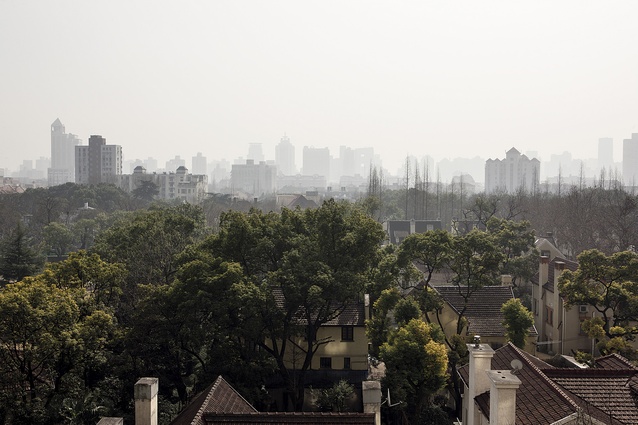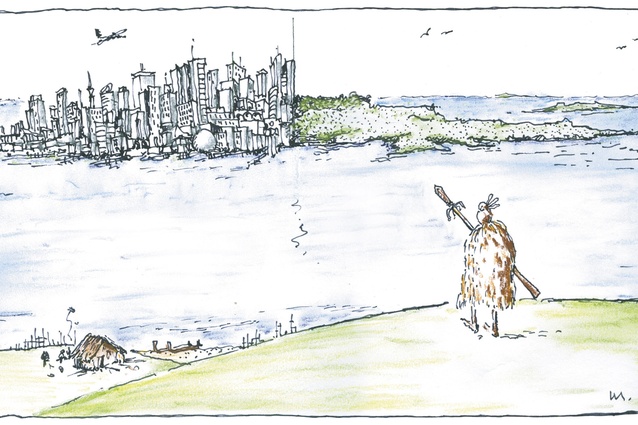Crouching Kiwi, roaring dragon
A month before flying in, I hear the name Jinan for the first time. It’s a Chinese city of seven million people. Driving in from the airport, we pass enormous hoardings with spectacular illustrations of Jinan’s dream homes and they are nothing like the brick bungalows Chinese people own in Botany and Howick. The Jinanese dream of an apartment in a tower that reaches for the sky out of a forested landscape. The hoardings present buildings in nature and, seen in that light, they become as winning as is a developer’s picture of a subdivision at a New Zealand beach.
We pass perhaps 100 tower cranes, almost all of them building 30 to 40-storeyed apartment blocks, in clusters of 10, and even of 20.
And we’re following just one main road in one provincial city.

Later we find that the pattern of tower-cluster development is repeated from Beijing in the north to Guangzhou in the south. On a train trip down the Eastern provinces, we pass through old towns, some with courtyard housing, some with rows of one or two-storeyed blocks of the kind Westerners associate with repressive communism. On the edge of town, there are often new apartment towers, right beside the cornfields and the fish farms of the countryside. High-rise, it seems, is now the only way to go.
In the 1960s, the high-rise cluster was the British Government’s solution to a squatter housing problem in Hong Kong. It was the same kind of housing that Britain had built at home after the Second World War – with often-disastrous social results. Yet, in Hong Kong, high-rise seemed to work. In 1967, an extended Hong Kong family of six was glad to have been offered a one-bedroomed government flat of 30m2 in a 20-storeyed tower block to replace their house in a squatter village. After 28 years, long-term resident Mr Wong still lives there and loves it (see High-density Living in Hong Kong).
By the mid-1990s, when Julie Stout and I were working in Hong Kong, the more prestigious architecture jobs in mainland China were being done there. I recall Julie converting traditional Beijing courtyard houses (linked by alleys called ‘hutongs’) into luxury trad-modern houses for well-placed Party cadres, and planning a massive city block in Tsing Tao for a Hong Kong Chinese architect who had been born in Shanghai.
In the coastal town of Shenzhen, along the Hong Kong-Guangzhou rail line, there were already tower-block hoardings and, rising from among ducks and ponds and little farmhouses, were the chimneys of many brickworks.
Shenzhen is now a high-rise metropolis. Even Shanghai changed gear in the 1990s to embrace Hong Kong-style high-rise. Over the 36 years since Mao’s death, China seems to have turned increasingly to Hong Kong as the model for new Chinese cities.

Hong Kong has been highly constrained by topography. Much of it is mountainous and, through more than 100 years of expanding settlement, less than a quarter of the 120km2 of available land has been built upon.* Successive governments, both British and Chinese, have simply limited the supply of (state-owned) land to developers by edict, eking it out, raising its value, encouraging high density. Save in a few outlying villages of houses, almost all Hong Kong people – both rich and poor – live in apartments.
The apartments of the rich are grander and the buildings are generally placed higher on the hillsides than are those of the poor, but everyone is imprinted with the spatial perceptions of the high-rise dweller. In compensation, most people live within easy walking distance of a park or the sea, and the towering settlement pattern is reinforced by a complex of public transport systems so successful that travel by private car occurs rarely, if ever, in most people’s lives.
The devastating social effects in England of post-war high-rise housing seem to have no obvious parallel in what was Britain’s Far Eastern colony.
Unlike New Zealand, Hong Kong does not require private outdoor space to be provided for every apartment. In Mr Wong’s words, “Why do we need our own outside space? Space is shared by the public. We can walk to the nearby beach park for exercise.” In Jinan, balconies are a relative luxury, often stacked with surplus furniture. The parks are well furnished with public exercycles and treadmills; they are where old people work out by day, perform T’ai chi and supervise grandchildren on play equipment. In the dusk, local singers and dancers perform in groups to the passing parade.
Looked at from a New Zealand viewpoint, an apartment with no deck seems grimly enclosing but we don’t come from a culture that tends to view the outdoors as a separate and sometimes dangerous place. Most of us here still think that an apartment is no place for kids to live. Don’t they need to climb trees and run around on the grass? The delicious print of springy grass on a young foot is rarely experienced by urban Chinese children, but I wonder whether they are much the worse for it. When I ask Jinan university students if they notice any limitations in being brought up unconnected to the ground, they wonder what on earth I’m talking about.
How can the architectural aspirations of New Zealanders be so far from those of Chinese people? In New Zealand there is a widespread belief that high-rise housing is inappropriate socially, at odds with the context of the New Zealand city, a threat to heritage, visually dominating almost anywhere it is sited and, by and large, ugly. Nimbyism blocks almost every attempt
to build it.
Meanwhile, the Chinese and the Taiwanese, Koreans and Singaporeans build almost nothing but high buildings. With beguiling arrogance, many New Zealanders seem sure that European cities (Stockholm, Barcelona, Amsterdam) are the only useful models for us. Chinese cities are assumed to be low grade. They have attracted a very large and poor rural population over the last 20 years. The staggering success in housing and feeding these people can never be remarked upon, however, without an accompanying sotto voce on cities that have been built but never occupied, bridges that have fallen down and bribery in the construction industry. Yet the rich as well as the poor live in high-rise apartments.
Gated condominiums with grand entrances and gatehouses are the rule.
It is said that scarcity of land for food production has forced the present Chinese government policy of high-density development in cities across the country. If Hong Kong is their model, they can expect that, within a generation, former villagers will adapt to high-rise life.
In China, intense urbanisation is seen to maximise opportunity. In New Zealand, it is feared as an attack on the personal privilege
of land ownership. History, memory and cultural expectancy rapidly compromise functionalist explanations of almost everything in architecture.
As I look out over Auckland Harbour from my window, I imagine a scenario on the distant hills of Waiheke Island that gives an idea of what really high density means. Waiheke Island is 92km2: Hong Kong Island is 80km2. At the density of Hong Kong, the entire population of greater Auckland could be housed on Waiheke, together with all the cultural facilities of the city and a vastly increased commercial area. And all this would cover only half of the island. The other half would be public open space (40% of Hong Kong’s total area is Country Parks, with mountain tracks and even deserted beaches).
Imagine that British Colonial settlers had found the Maori as numerous and powerful as they found the Chinese. We might now be living happily in high-rises on Waiheke, gazing back at the volcanic cones, forests and farmland of Tamaki Makaurau.













